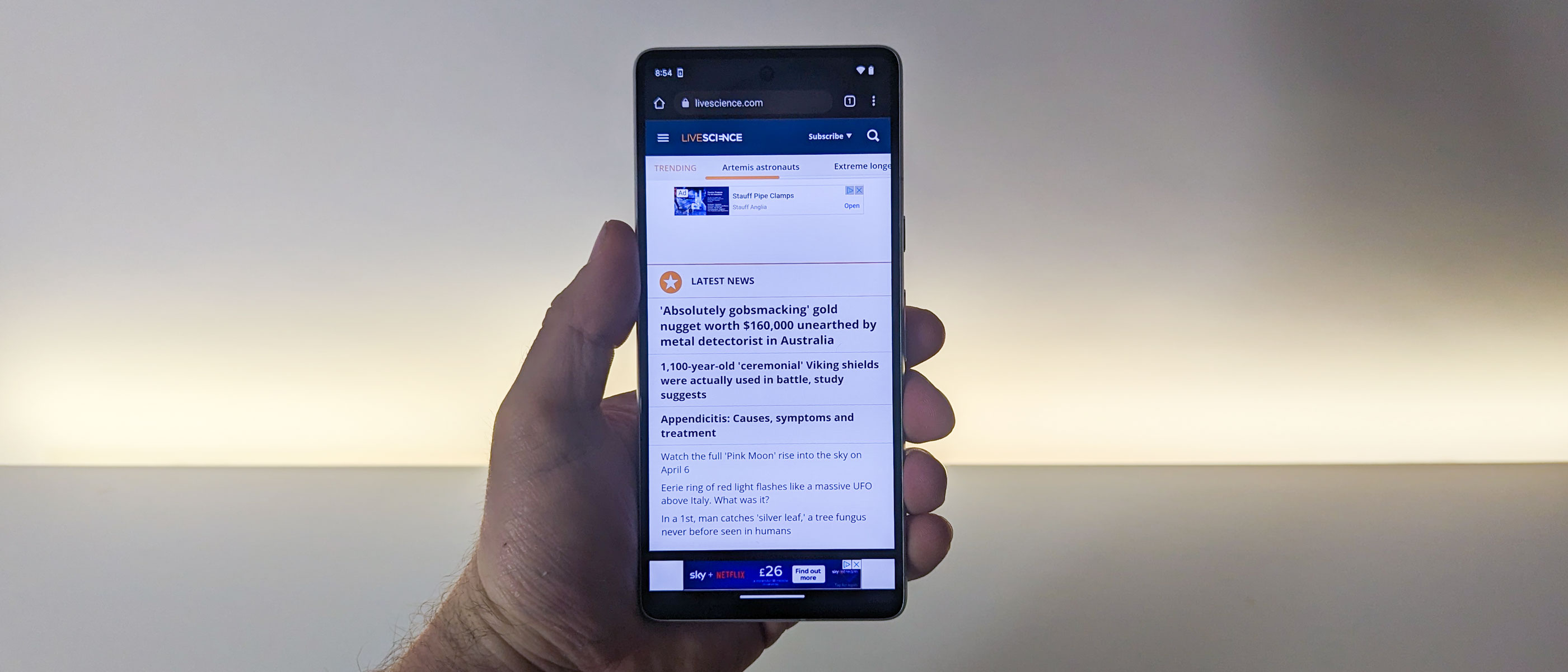Live Science Verdict
The Pixel 7 has a fantastic camera system that creates beautiful photos and videos, and its speedy performance is a pleasure when in use. Though it's let down by its fingerprint scanner, it's otherwise an excellent smartphone for photographers at a decent price.
Pros
- +
Big, bright, detailed screen
- +
Fantastic camera features
- +
Great stabilized video
- +
Good value for money
Cons
- -
Fingerprint recognition intermittent
- -
Too slippery when handling
- -
Images not as punchy as Pixel 6
Why you can trust Live Science
The Google Pixel 7 takes over from the Pixel 6 as Google's second iteration of smartphones to house their home-made Google Tensor chip but this time in the form of the newly developed G2 chip which it rates as faster, more efficient and more secure.
We don't typically cover phones here on Live Science, but we do love our astrophotography cameras and the Google Pixel 7 is positioned as a great alternative to a dedicated astro camera, so we had to check it out.
Dimensions: 6.1 x 2.9 x 0.3 inches (155.6 x 73.2 x 8.7 mm)
Weight: 6.9 oz (197 g)
Display size: 6.3-in (160.5-mm), 20:9 aspect ratio
Display resolution: FHD+ (1080 x 2400) OLED at 416 PPI
Camera: Rear 50MP f/1.85, Ultra-wide 12MP f/2.2, Front 10.8MP f/2.2
RAM: 8 GB LPDDR5
Internal memory: 8 GB LPDDR5
OS: Android
CPU: Google Tensor G2
Battery capacity: Minimum 4270 mAh, Typical 4355 mAh
Pixel smartphones have always been known for their excellent camera performance and the Pixel 7 is no different. Very similar to the Pixel 6 it has all the regular features (which we'll get into more down below) but also introduces a new Cinematic Blur feature which applies a shallow depth of field blur effect to videos and records them at 24FPS (the cinema standard framerate).
There are a few bugbears that still hang over from the Pixel 6 though, including the frustratingly intermittent biometric fingerprint lock and awkward swipe-down menu for turning Wi-Fi and mobile data on and off. However, it's a fantastic smartphone and performs speedily.
Google Pixel 7: Design
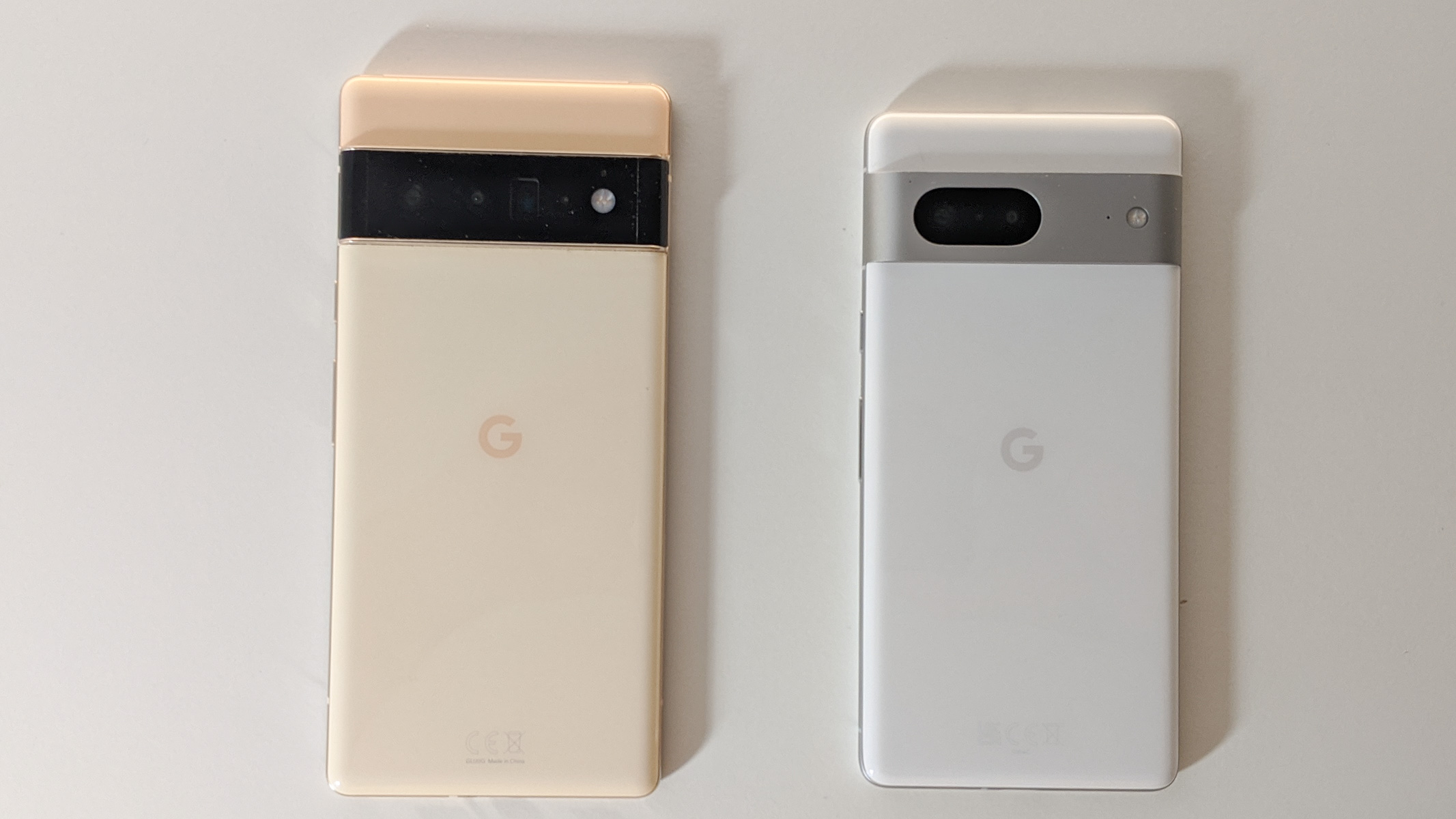
- Camera visor strip now even bigger
- Same slippery glass back makes for difficult handling
- Wrap-around screen has gone for easier one-handed use
Not surprisingly the Pixel 7's camera visor strip is still there, having first appeared in the Pixel 6. But not it's even bigger. Holding it up to the Pixel 6 we can see the notch is deeper and is now constructed of aluminum rather than glass. Quite why Google felt the need to continue this visor bump is a little beyond us because it takes the overall depth of the phone from its slim 0.3 in (8.7 mm) thickness to 11.3mm (according to our digital calipers). This maximum depth is what camera case manufacturers will work to in order to protect the device. That means a thick phone on top of an already pretty tall and wide phone at 6.1 in (155.6 mm) x 2.9 in (73.2 mm).
One-handed use is tricky unless you have big hands so two hands are almost always required when using the top slide-down menu. This awareness from Google is evident when we first boot the device because all the app icons are placed at the bottom of the screen.
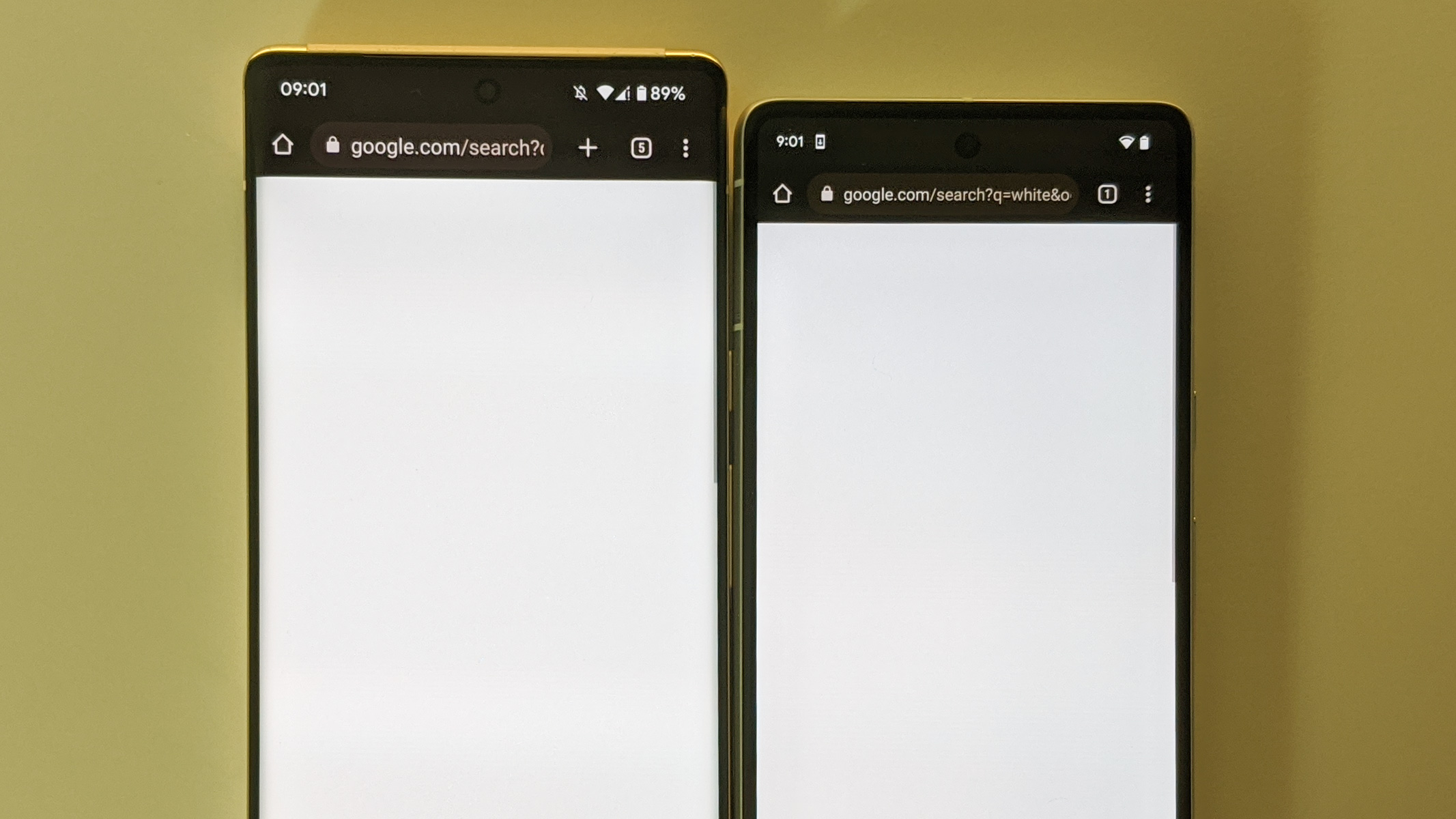
There's a lot to love about the Pixel 7's construction. Its housing is made from recycled materials, which comprise 19% of the smartphone's weight (it is not fully made from recycled materials as some of the advertising may lead us to believe if read incorrectly). The 6.3-inch display is bright and easily usable outside in bright sunlight. Again, the advertising campaign states that it's 25% brighter than the Google Pixel 6 and 6 Pro compared to measured nits between devices.
However, we couldn't replicate this finding in the real world. Comparing the Pixel 7 side-by-side with the Pixel 6 Pro we set both screens to white at full brightness and found it hard to tell the difference. Asking others in the office to weigh in some actually argued that the 6 Pro was brighter (perhaps due to the increased size of the 6 Pro's screen) but one thing was apparent: There was an increase in pearlescence on the Pixel 7. Moving back and forth, looking at the screens from all angles the Pixel 7's screen shifted through yellows and pinks more often than the 6 Pro, which is a tad disappointing. That said, the Pixel 7 is IP68 water and dustproof and contains Corning Gorilla Glass Victus on the front and back of the device for added protection.


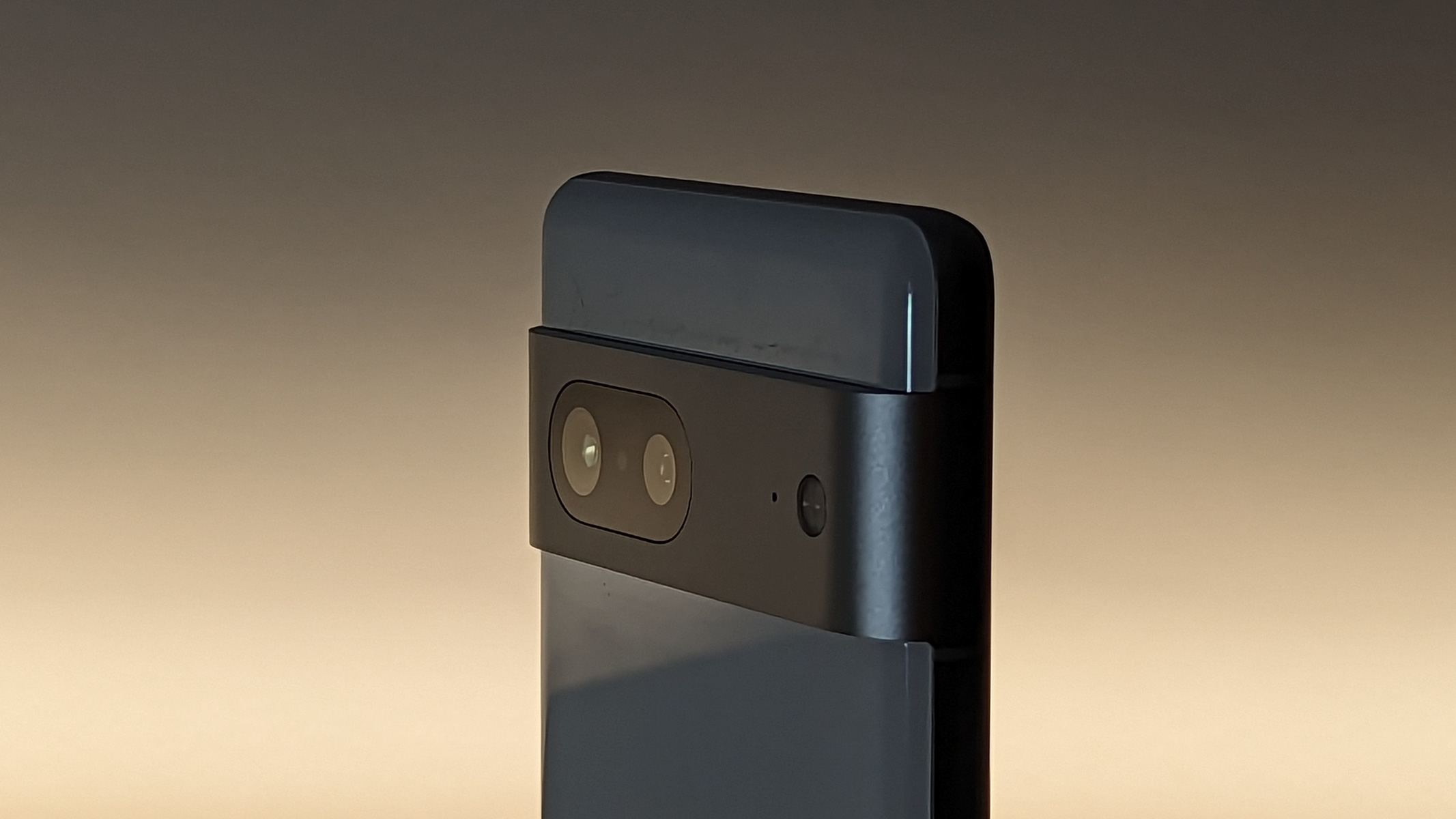
Google Pixel 7: Functionality
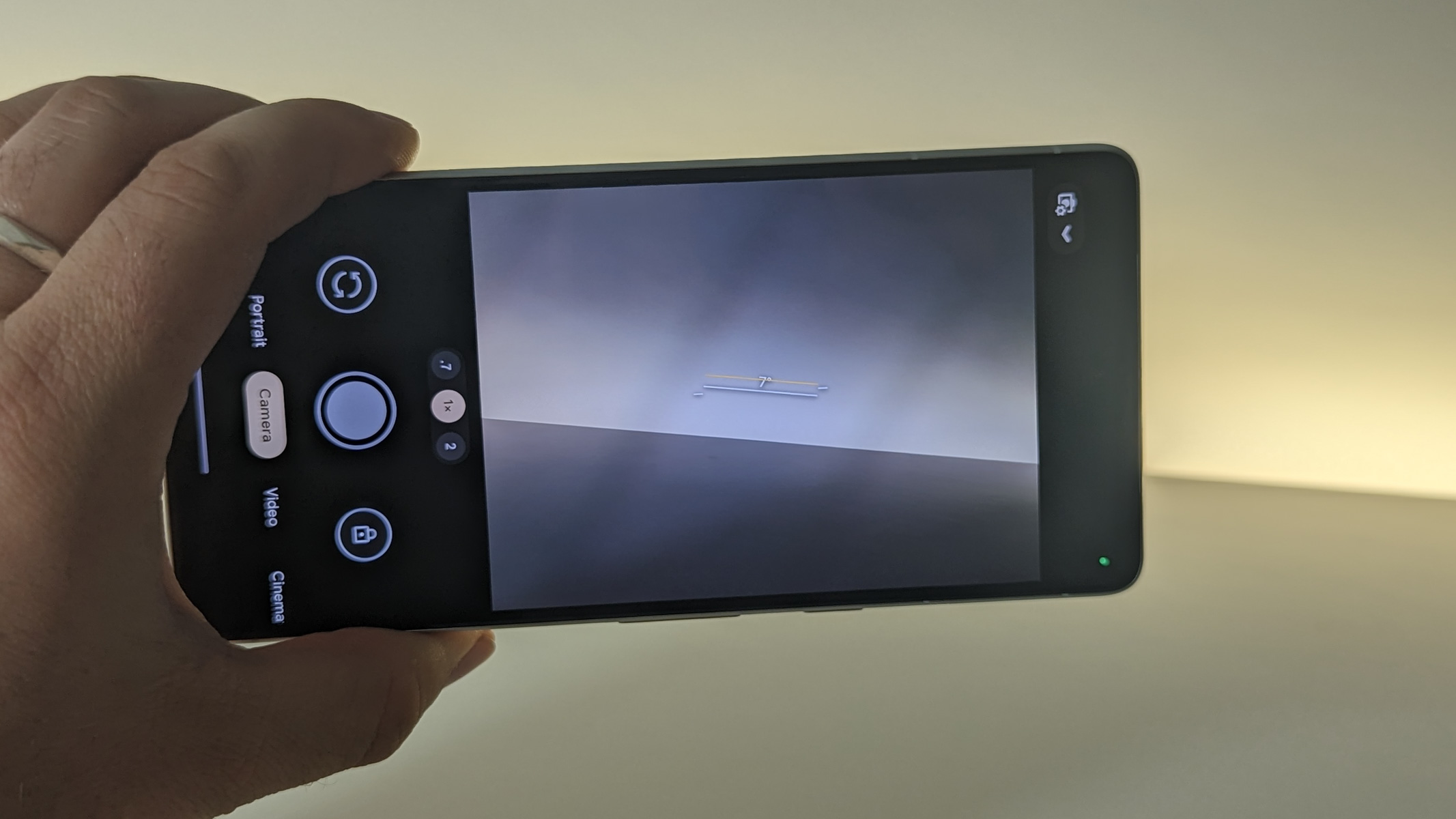
- Apps are fast to load and glitch-free
- Speakers give good clarity but lack low-end found on 6 Pro
- Fingerprint scanner is awkwardly unreliable
Something we adore about the Pixel 7 is its blistering speed when in use. Want the camera to appear? Double-tap the power button and the camera quickly zooms into view ready to take a snap. Want the screen on? Double-tap it to have the large clock display, date and weather display along with the lock screen. All the Google apps (Chrome, Maps, Photos, Gmail, Play Store) open with speed and have given us no glitches at any point.
The speakers on the Pixel 7 are clear and precise for a smartphone with good high-frequency performance and impressive loudness. Compared to the 6 Pro though it does lack in low-end frequencies with a noticeable drop-off in the low-mids so music isn't quite as impactful as its predecessor but note that we did not test this against the 6, only the 6 Pro.
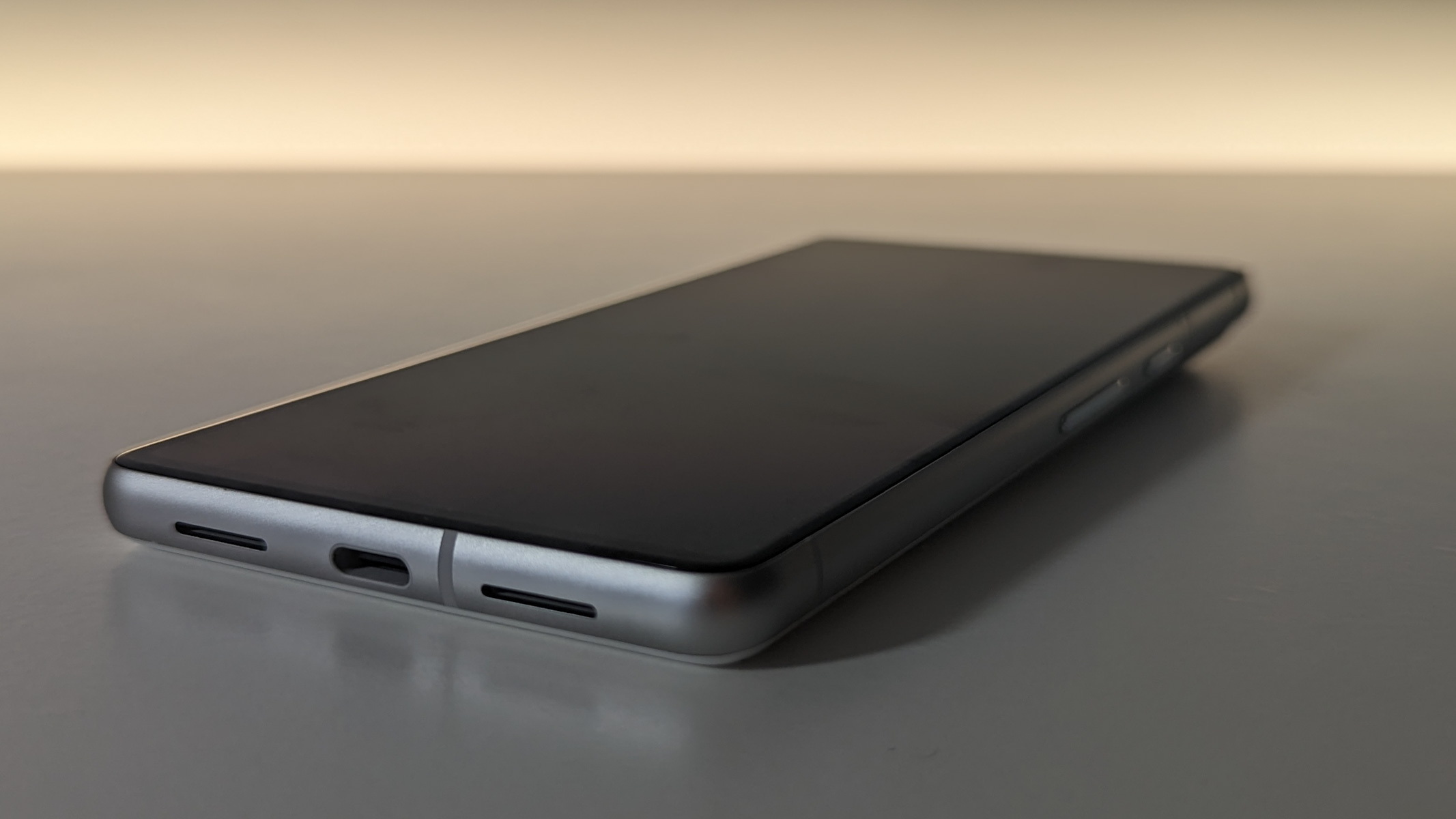
Day-to-day use is tricky without a phone case because of the aforementioned slipperiness of the glass back and something Google still seems not to have improved is the biometric fingerprint ID feature which unlocks the phone. Placed on the lower third of the screen users should be able to touch and go to open the phone and when it works it is super fast. However, we had a success rate of about 75%, similar to the 6 Pro which is really disappointing. Compared to when Google placed the fingerprint scanner on the rear of the devices where it was almost 100% successful depending on how dirty our hands were, we think this is something Google really needs to sort out.
Google Pixel 7: Camera performance
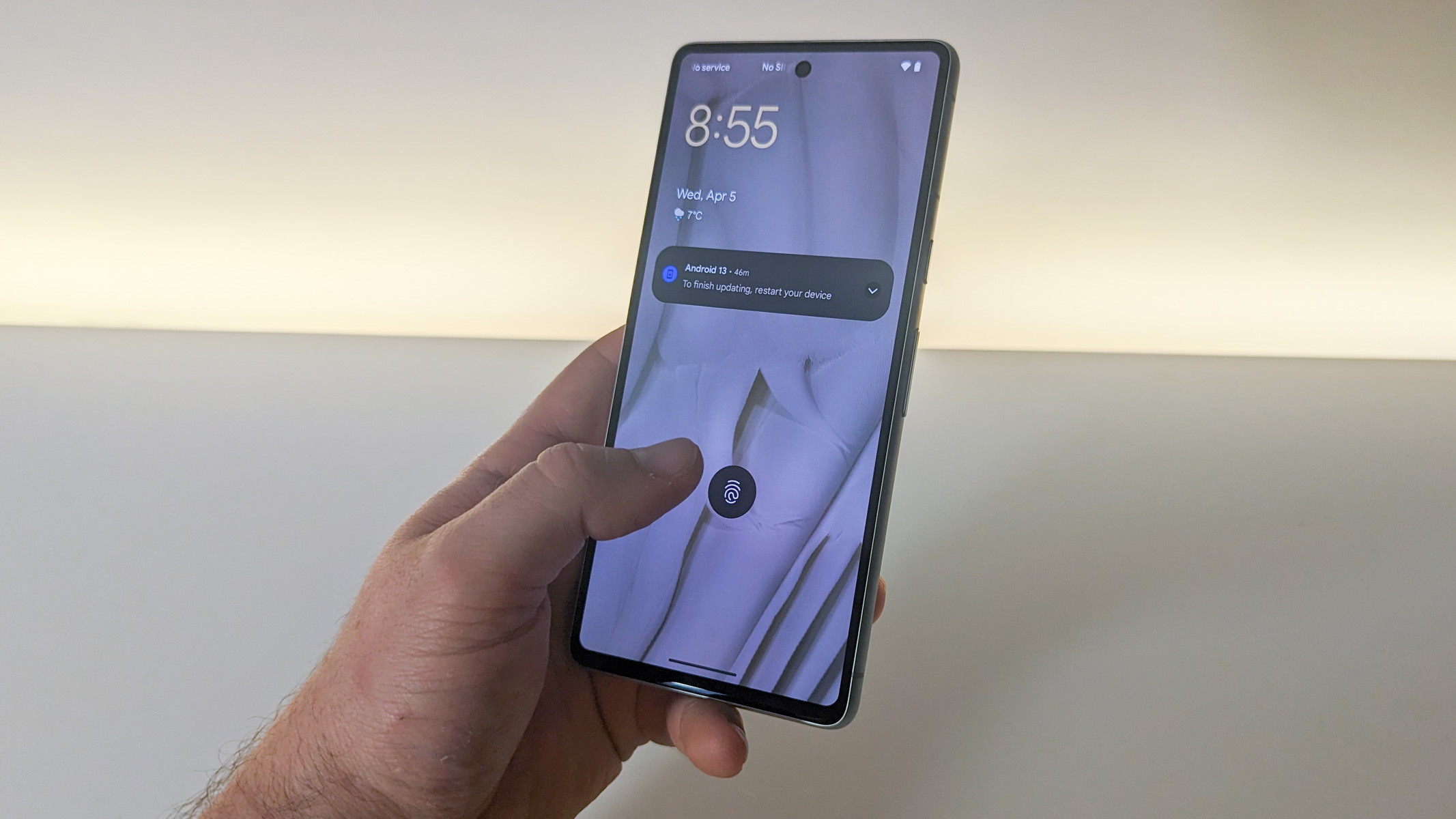
As usual for Pixel phones, the camera performance on the Pixel 7 is outstanding. Fast autofocus even in low light settings makes it a doddle to get sharp photos and a close-focusing ability means close-up photos of subjects are simple. Like the Pixel 6 it has autofocus tracking so that you can select a subject and then move the phone around all while the smartphone keeps focus on that subject which works exceptionally well.
We were really surprised at some crucial improvements from even the 6 Pro on noise handling with clearly some additional processing magic going on inside to reduce shadow noise when photographing inside. Colors are now more muted than the 6 Pro which is a little less impressive initially but ultimately more realistic and automatic applied sharpness has also reduced, again for the better. This results in cleaner photos and videos and Google's RealTone makes a point of being able to properly expose portraits no matter the color of your skin.
The same 0.7x ultra-wide option is available when in selfie mode and this helps fit larger groups or more backdrops in the shot during selfie capture. Selfies also seem to have inherently more contrast in the 7 compared with the 6 Pro and this helps keep faces clear and distinct which we find a plus.
We had great results using it for photographing the night sky too, meaning it's a fantastic alternatives to the best astrophotography cameras if you don't want to buy a dedicated camera. We were shooting during summer nights, which isn't ideal for astrophotography, but we still captured some wonderful shots as you can see below.
- Pricing in the US: 128GB: $749 256GB: $849 512GB: $949
- Pricing in the UK: 128GB: £474 256GB: £574
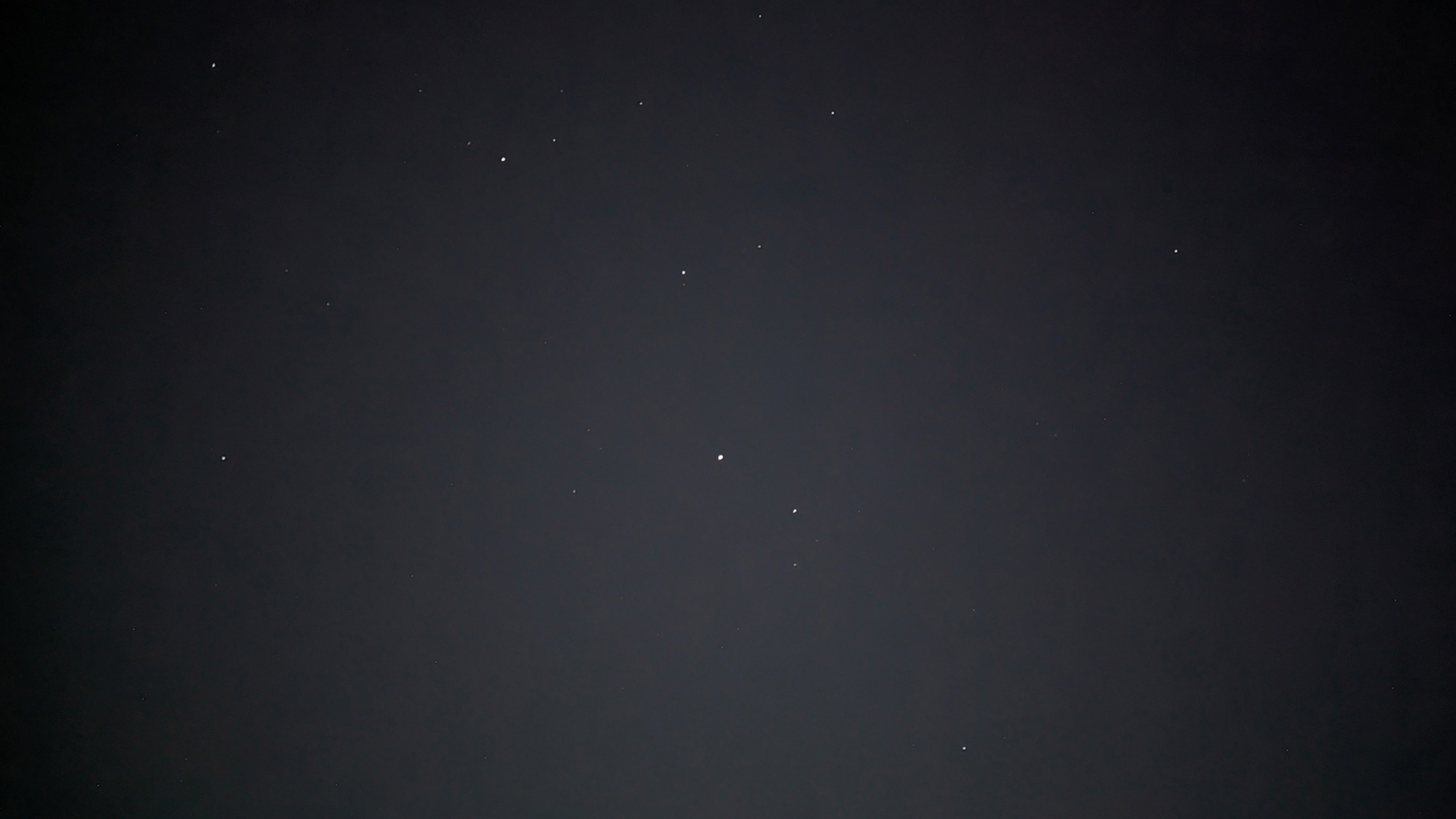
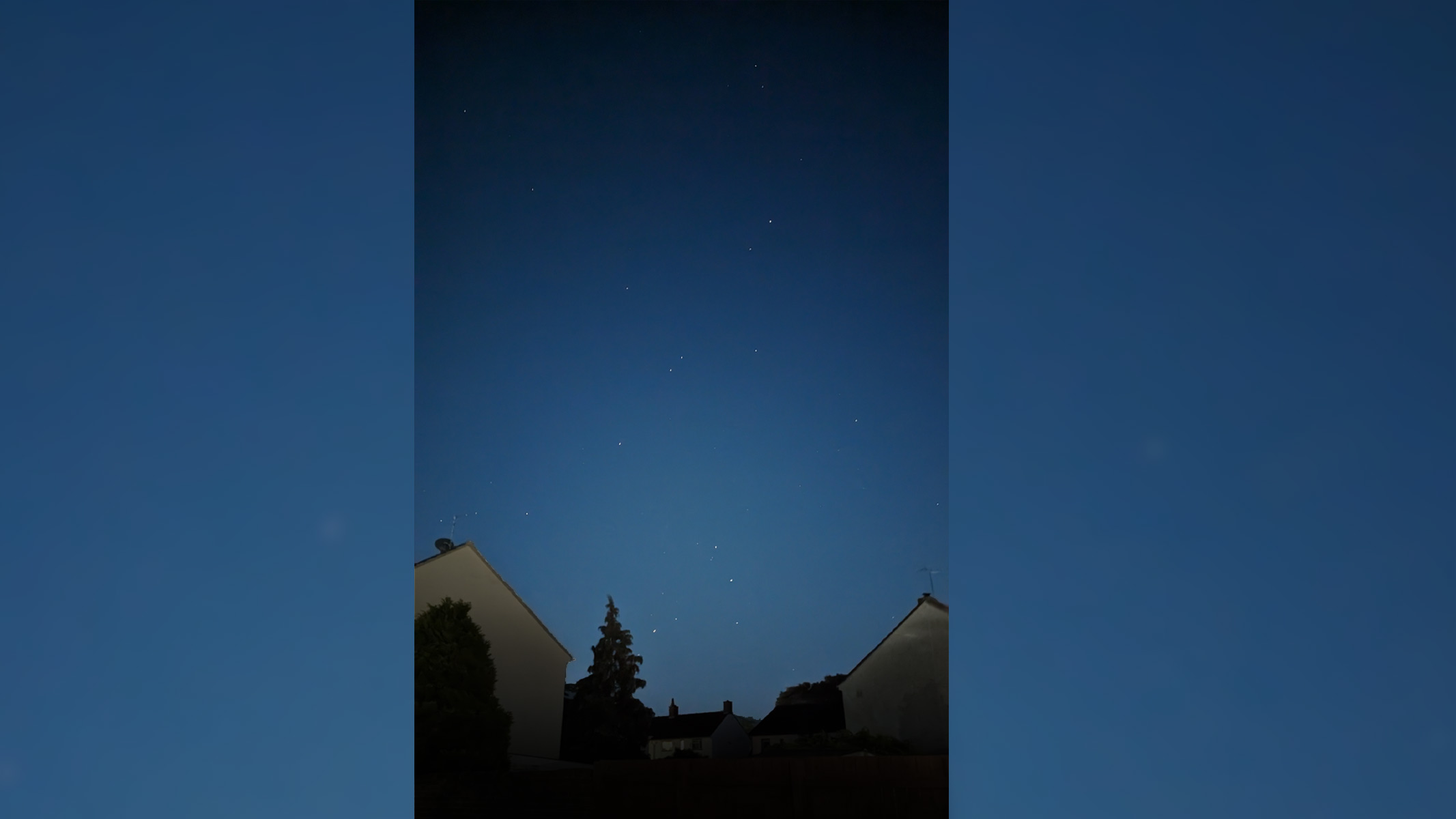
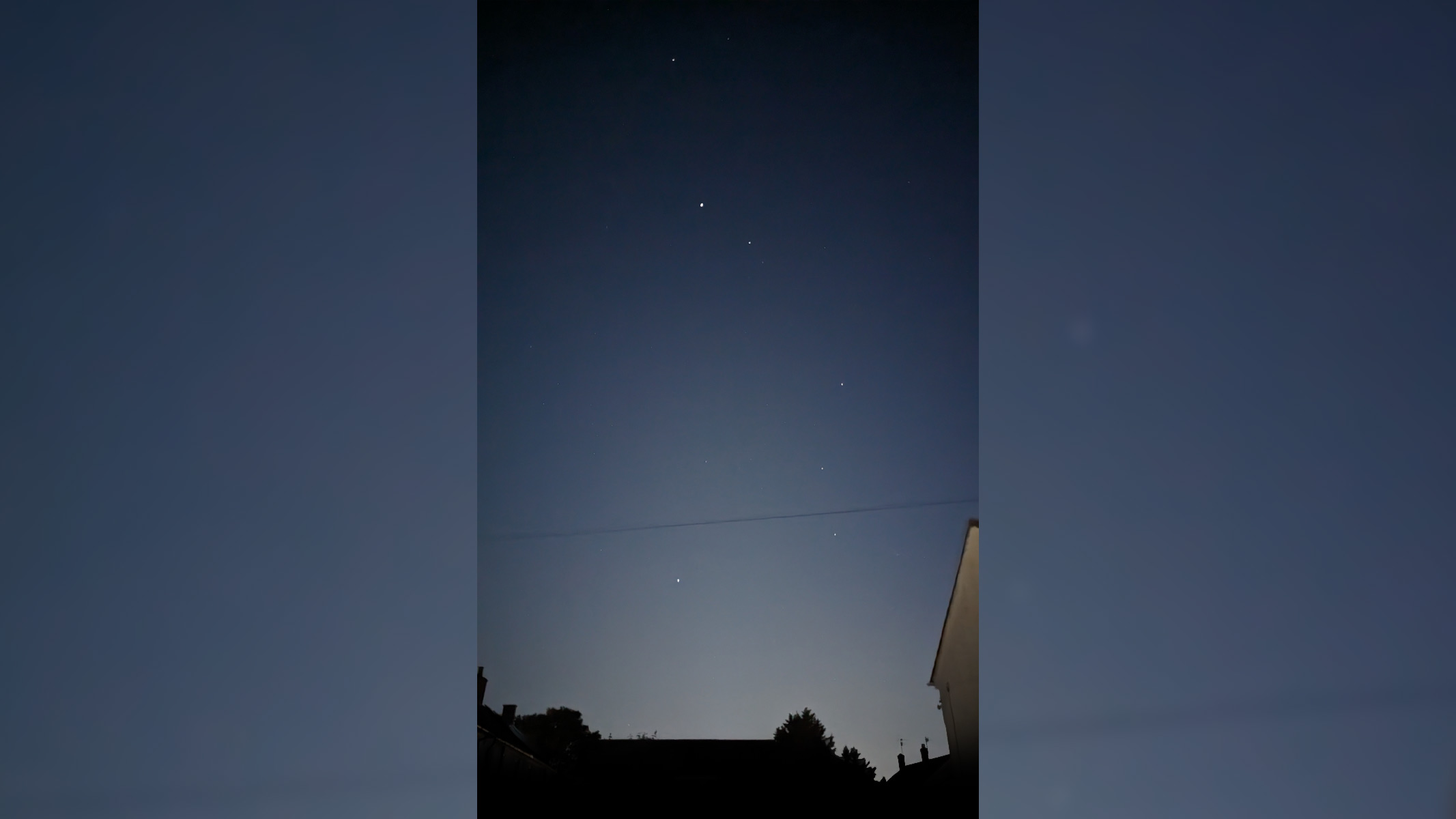

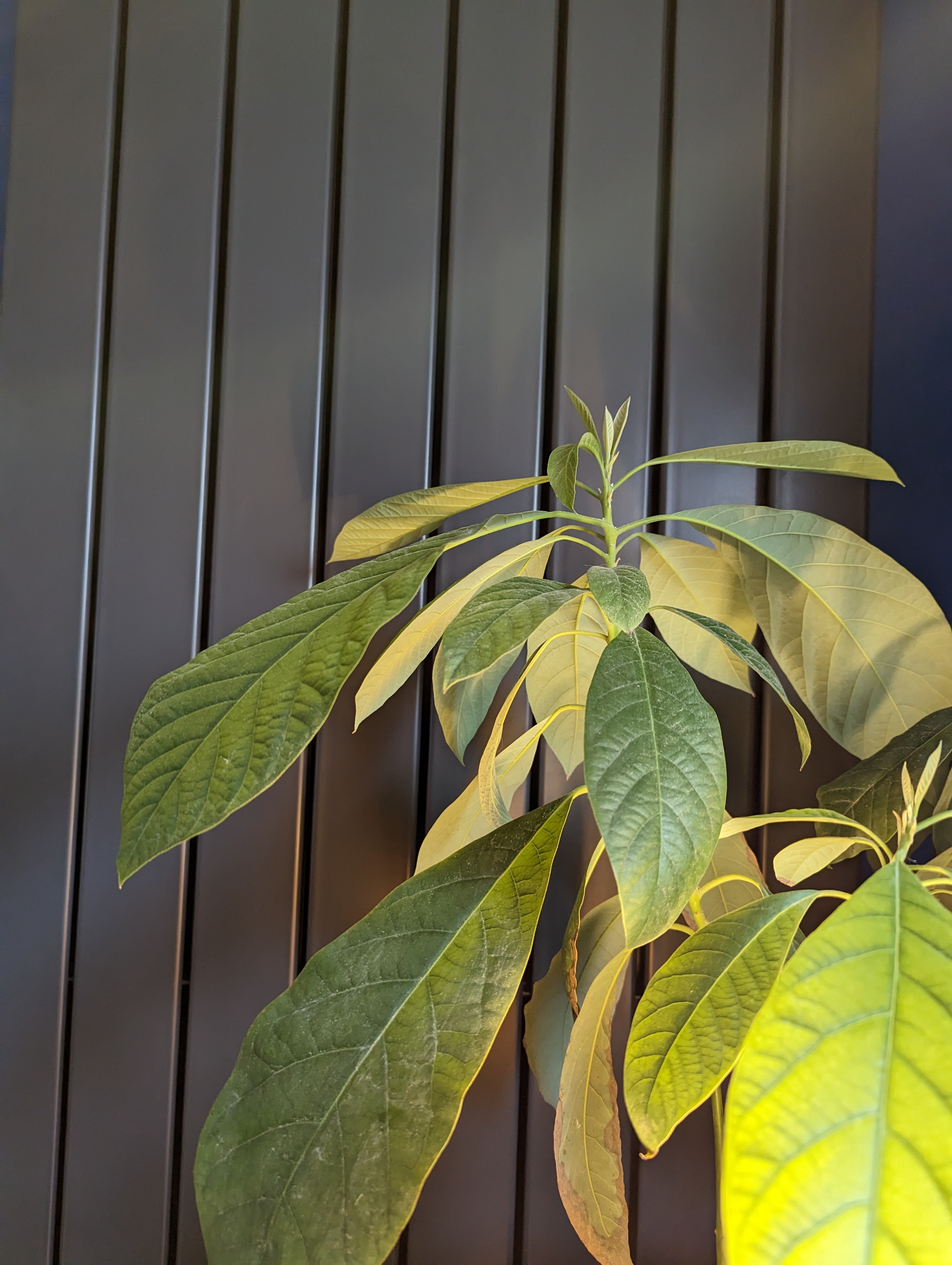

Should I buy the Google Pixel 7?
We have highlighted a few of the issues surrounding the Pixel 7 which are surprisingly still a hangover from the Pixel 6 but ultimately these are hair-splitting issues that most users will easily ignore (except that pesky biometric fingerprint scanner). There are a few other improvements on the inside such as Google's Titan M2 chip and additional security which we like but ultimately, the casual user isn't going to notice this on a day-to-day basis.
This smartphone is best for photographers and videographers who value their image and footage quality and want a phone that just works perfectly wherever and whenever they're around. A good 24-hour battery life (extended up to 72 hours on extreme battery saver mode) makes it eminently travelable and all the Google apps we know and love function speedily without issue.
If this product isn't for you
Want all the camera and video performance without the price tag? We'd recommend the Pixel 6 or the 6 Pro because except for a little noise reduction in shadows and a difference in image processing off-the-bat (which can be combated with shooting RAW) we can't see a big enough difference to warrant the extra expense. Dropping some money on the 6 Pro will also get you a telephoto lens to provide 4X optical zoom, perfect for distant portraits or zooming into landscapes and cityscapes.
Not a fan of Android? The iPhone 14 and 14 Pro are now available and feature improved low-light performance on the main and ultra-wide camera lenses. While we haven't tested them out yet we'd argue that these are possibly the best non-Android phones out there even when compared with their previous 13 and 13 Pro models, though they are much bigger and bulkier so trickier to use in smaller hands.

Jase Parnell-Brookes is the Managing Editor for e-commerce for Live Science and Space. Previously the Channel Editor for Cameras and Skywatching at Space, Jase has been an editor and contributing expert across a wide range of publications since 2010. Based in the UK, they are also an award-winning photographer and educator winning the Gold Prize award in the Nikon Photo Contest 2018/19 and named Digital Photographer of the Year in 2014. After completing their Master's degree in 2011 and qualifying as a teacher in 2012, Jase has spent the last two decades studying and working in photography and publishing in multiple areas, and specializes in low light optics and camera systems.
'A relationship that could horrify Darwin': Mindy Weisberger on the skin-crawling reality of insect zombification
'Dispiriting and exasperating': The world's super rich are buying up T. rex fossils and it's hampering research
Trove of dinosaur footprints reveal Jurassic secrets on Isle of Skye where would-be Scottish king Bonnie Prince Charlie escaped
